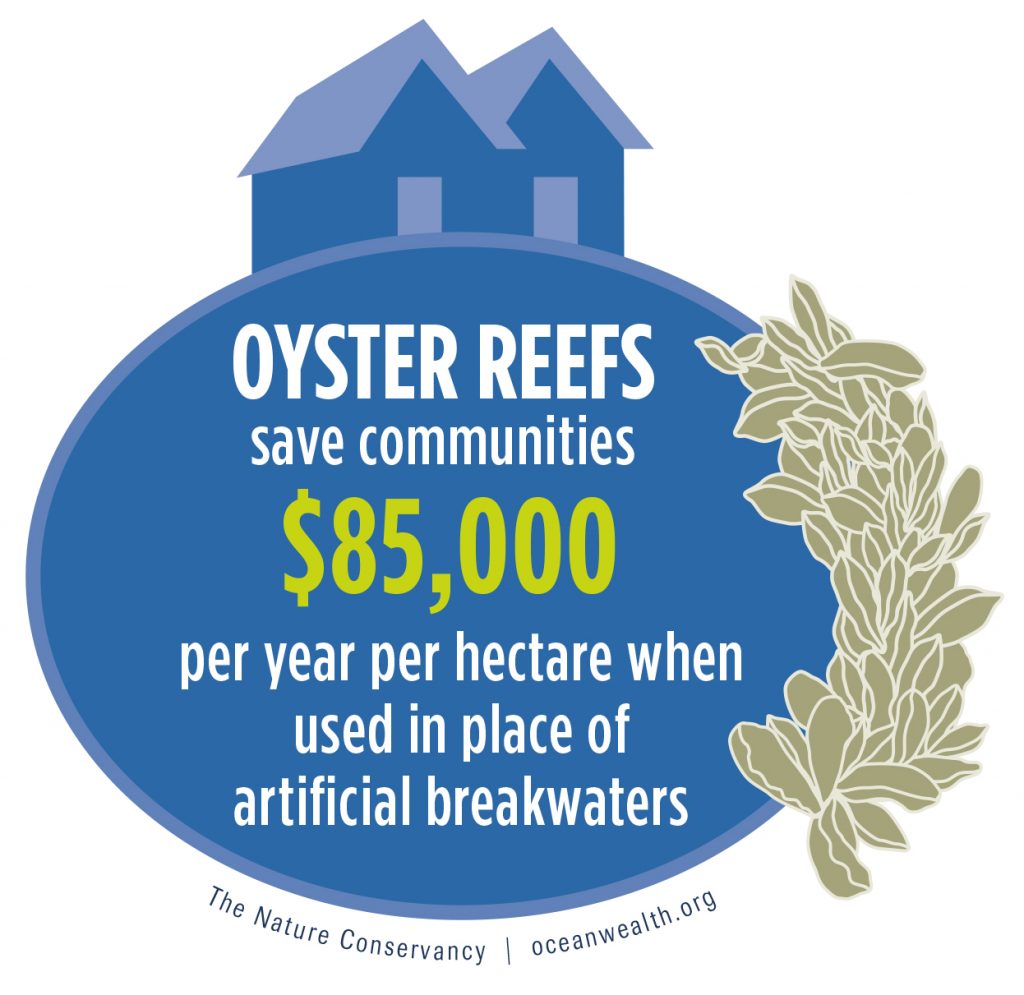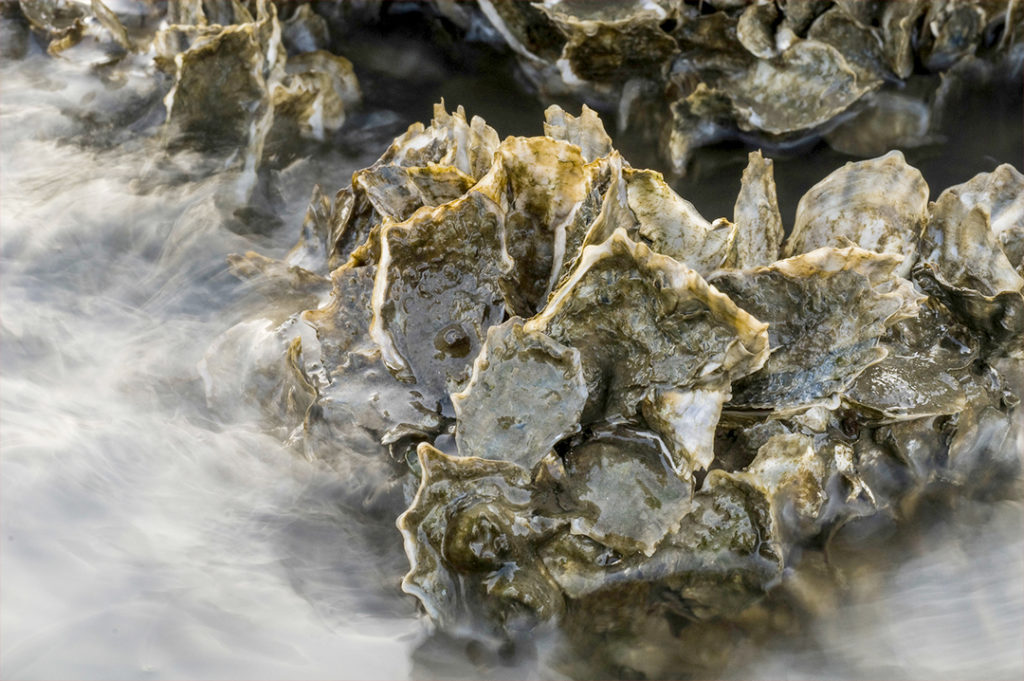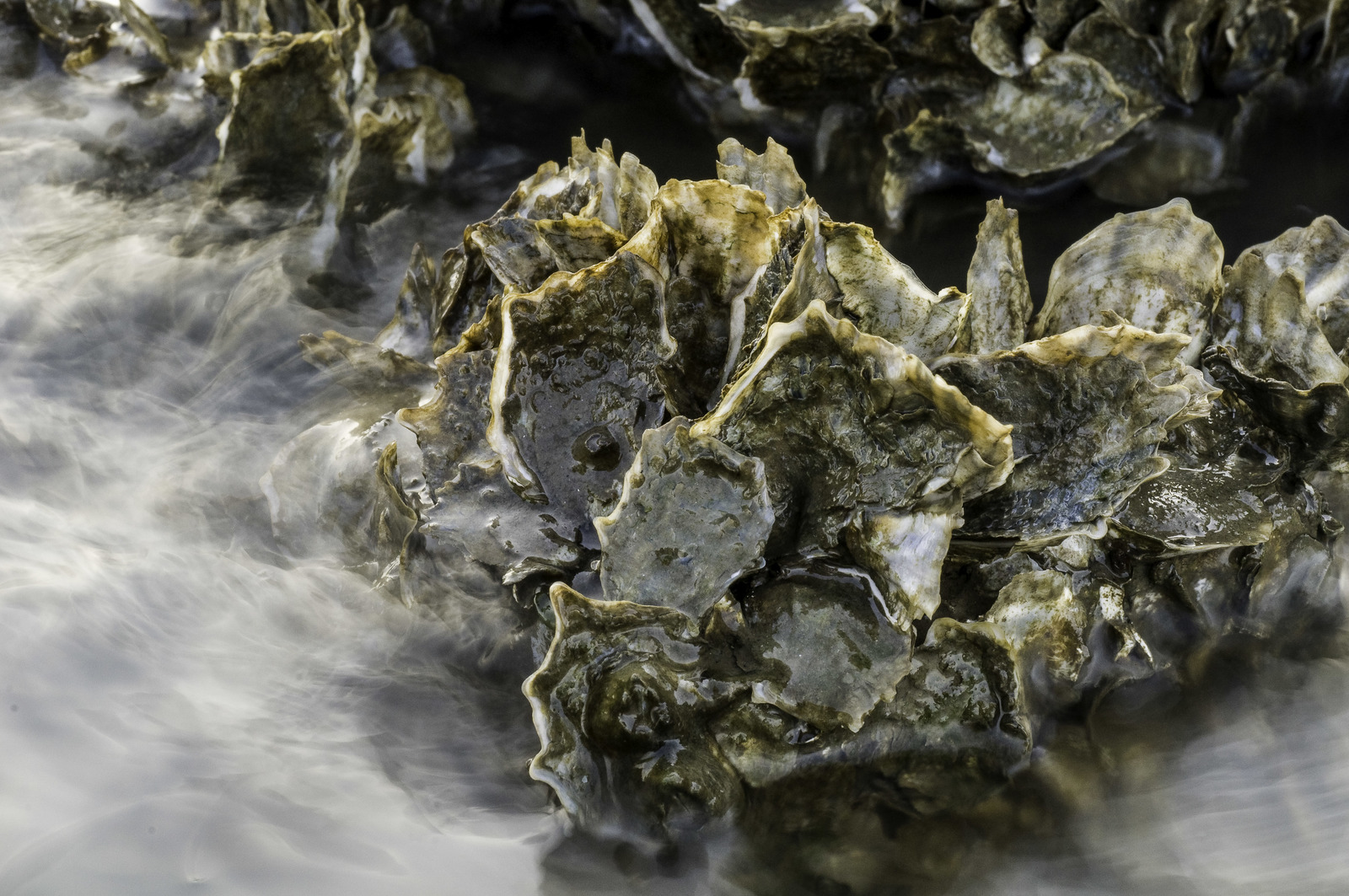
Oysters are consumed by humans as food. What is not always documented is that oyster beds also provide fisheries enhancement of other consumable marine life, in addition to protecting coastlines from storms and filtering water. The complex arrangements of oyster beds provide nursery and nesting sites for fish. Juvenile fish avoid predation by hiding among the beds increasing fish biomass. Oyster beds also act as attachment points for macroalgae and a variety of invertebrates. Burrowing shellfish can also cycle nutrients within the sediments, enabling conditions that are important for many other species that reside within and above sediments.
Densely packed beds and reefs of oysters form a natural breakwater, dramatically cutting wave heights. They can also occur naturally in intertidal areas where they provide a form of shoreline armoring, preventing erosion and protecting marshes.

Oyster reefs and other bivalve aggregations are among the most effective of all the cleaners of coastal waters, filtering vast amounts of water from which they collect and digest microscopic algae for food. A single oyster can filter 180 liters of water every day. Great banks of oysters can thus yield measurably clearer waters, supporting underwater grasses and other plants that need light to survive underwater. These plants, in turn, yield additional benefits, like fish production and carbon storage, completing something of a virtuous cycle. As they filter water and feed, oysters also deposit waste material onto surrounding sediments where it fuels growth of helpful bacteria that digest this nitrate-rich waste. In doing so, these bacteria release nitrogen back to the atmosphere as harmless gas (78 percent of the air we breathe is inert nitrogen gas) through a process called “denitrification.” It is no wonder, then, that between their filtration and removal of nitrogen pollution, oyster reefs are becoming recognized as a critically important part of our estuaries. Scientist call oysters a “keystone species” in recognition of their important role in estuaries.
Unfortunately, in our quest to harvest these delectable bivalves around the world, and in our haste to develop the lands and waters they call home, oyster reefs have become the most imperiled marine ecosystem on Earth, with an estimated 85 percent loss globally.
Explore Oyster Reef Ecosystem Services
Tile images (left to right): © Nick Hall, © Jonathan Kerr, © Clay Bolt




